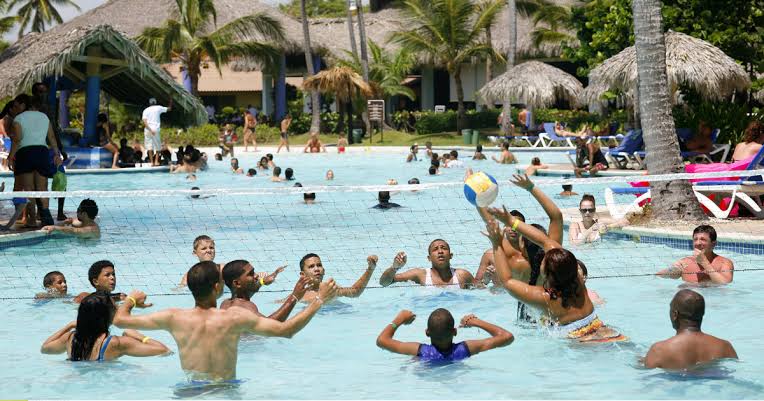Following their stays at resorts in the Dominican Republic, these ten Americans were reported dead..
The Mysterious Deaths of American Tourists in the Dominican Republic: A Tragic Tale of Unanswered Questions
In recent years, the Dominican Republic has become one of the most popular vacation destinations for American tourists seeking sun, relaxation, and luxurious all-inclusive resorts. However, a series of disturbing and tragic events has cast a shadow over the country’s tourism industry. Ten American citizens died under suspicious circumstances during their stays at various resorts, triggering widespread media attention, public outcry, and increasing concerns about the safety of travelers in the region.
While the Dominican Republic is a beautiful and culturally rich destination, these incidents have left many questioning whether it is as safe as it seems. Each death has left behind a grieving family, and a cloud of uncertainty surrounds the exact cause of these untimely and unexplained passings. The circumstances of these deaths were varied but shared a chilling resemblance, leading many to believe there might be a larger pattern at play.
The First Deaths
The first widely publicized incident took place in 2018, when two American tourists, Edward and Cynthia Day, died suddenly during their stay at the Luxury Bahia Principe Hotel in Punta Cana. The couple, both in their late 50s, were found dead in their hotel room, having reportedly fallen ill after consuming drinks at the resort. Though the initial reports suggested food poisoning or a natural health issue, the Dominican authorities’ investigation revealed no conclusive evidence to confirm either of those causes. The mystery surrounding their deaths raised suspicions about the safety of the resort’s amenities, including its food and drinks.
Soon after the Days’ deaths, a string of other American tourists began to die under similar circumstances. In each case, the victims were staying in all-inclusive resorts, and many of the fatalities occurred after consuming drinks from the resort’s bars. The common thread seemed to be that these individuals had no history of major health problems before their vacation, yet they passed away suddenly, often in their hotel rooms. This sparked growing alarm both in the Dominican Republic and in the U.S.
The Deaths Begin to Pile Up
In 2019, the incidents continued, with several more American tourists dying unexpectedly while staying at resorts in the Dominican Republic. Among these was the case of 51-year-old Miranda Schaup-Werner, who was found dead in her room at the Bahia Principe Hotel in June of that year. Her husband, Daniel Werner, was reportedly by her side when she collapsed after drinking a beverage from the minibar. Authorities indicated that a combination of heart failure and respiratory issues might have contributed to her death, but no direct link to foul play was identified.
Shortly afterward, 41-year-old Leyla Cox died while vacationing at another Dominican Republic resort, the Hard Rock Hotel & Casino Punta Cana. Her death was similarly marked by unexplained circumstances, as she too had reportedly consumed drinks at the hotel. As the bodies of American tourists continued to mount, families were left with little to no closure.
Each death was followed by an investigation, but in most cases, the Dominican authorities failed to provide answers, and the causes of death remained inconclusive. For some families, the lack of answers created more questions, fueling theories of negligence, poor hotel management, and even foul play. Investigations were often criticized for their lack of transparency, with some suggesting that Dominican officials may have been eager to protect the lucrative tourism industry rather than properly addressing the concerns of tourists.
Speculation and Suspicion
As the number of deaths increased, a growing wave of speculation swept over both the media and the public. Was it simply a string of unfortunate accidents, or was something more sinister occurring? Many families of the deceased American tourists began to believe that their loved ones had fallen victim to a deliberate act, such as poisoning or an undetected contamination of the resort’s food and drink supply. Several even suggested the possibility that the deaths could be linked to the consumption of tainted alcohol, with some of the victims reporting severe stomach and respiratory symptoms before their deaths.
Some experts pointed to the prevalence of counterfeit alcohol in the Dominican Republic, which has been an issue in certain tourist hotspots around the world. Fake alcohol is often made with industrial chemicals, and consumption of these substances can lead to poisoning, organ failure, and death. The timing and similarities between the victims’ cases made it seem plausible that some of these deaths could be linked to this dangerous practice, though no conclusive evidence was ever presented.
As news spread, the Dominican Republic’s government began facing increasing pressure to address the issue and ensure the safety of international tourists. Some tourists even opted to cancel their vacations to the island, fearful that the authorities were not doing enough to prevent further fatalities. Meanwhile, advocacy groups and legal teams representing the families of the deceased pressed for answers, demanding that the resorts be held accountable and that thorough, independent investigations be conducted.
Unresolved Questions and the Role of Tourism
The deaths of these ten American tourists have raised a host of questions that remain unanswered. What was the true cause of these tragedies? Were they the result of a deliberate act, or simply a series of unfortunate coincidences? And why did so many of the victims die after consuming drinks or food at these resorts?
The fact that these deaths occurred in the context of high-end resorts where tourists were supposed to be able to relax and feel safe has further complicated the issue. The Dominican Republic is heavily reliant on tourism as a primary source of income, with millions of visitors flocking to its resorts each year. The country’s economy depends on its reputation as a top vacation destination, and many critics have argued that the Dominican government and resort owners have been more focused on protecting that image than on addressing the underlying safety concerns.
Some have suggested that there may have been a lack of proper regulation or oversight at these resorts, leading to poor hygiene practices or the use of dangerous substances in food and beverages. Others have called for more stringent safety measures, including better transparency in reporting deaths and more thorough investigations into the circumstances surrounding them.
A Lasting Legacy of Tragedy
As the families of the deceased American tourists continue to seek justice and answers, the deaths remain a haunting reminder of the potential dangers that lurk beneath the surface of seemingly idyllic vacation destinations. While the Dominican Republic remains a popular travel choice for millions, these tragic events have served as a wake-up call for both tourists and authorities alike.
Until the causes of these deaths are fully understood, the tragic tales of the ten Americans who lost their lives will continue to haunt the memories of their families and cast a long shadow over the reputation of the Dominican Republic as a tourist paradise. And for those who continue to visit, the question remains: How can travelers be certain that their safety is a priority when they venture abroad? Until this question is answered, the chilling mystery of these deaths remains unresolved, leaving a legacy of sorrow, fear, and uncertainty.


